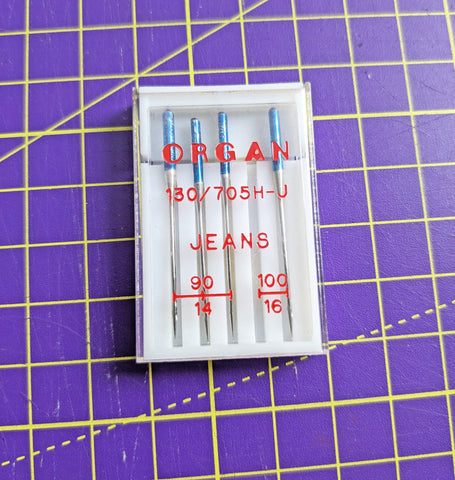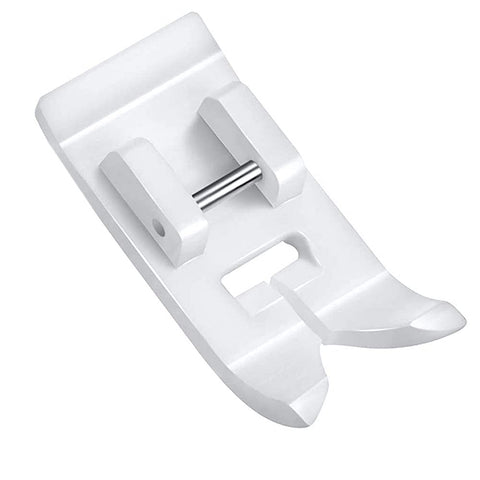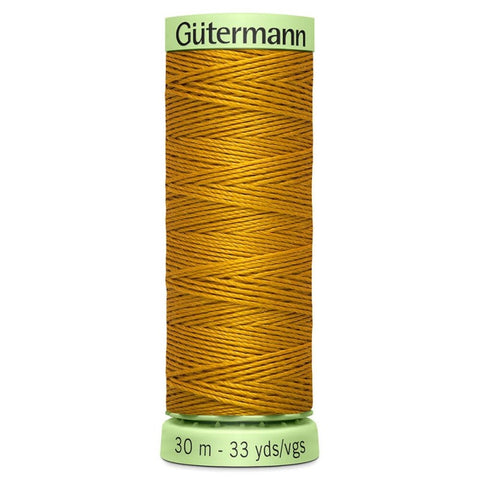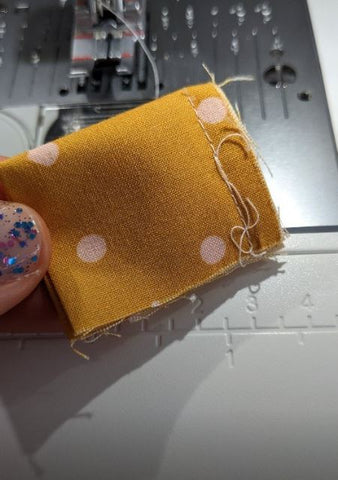Are you thinking of making your first backpack using canvas? Or maybe a denim or twill jacket? If it's your first time sewing with heavy-weight fabrics, I have compiled a list of tips to help you get the best results. Let's go!
Change your needle
It is essential to match your needle to the fabric you are working with. For example, if you are making a pair of denim trousers, get needles labeled as "Jeans". When using canvas, do the same. And what about leather? You will find there are also specialised needles so that your machine can cope with this type of material.
Using the correct needle on your machine will prevent breakage problems and avoid skipped stitches.

Check your presser foot
Even though you could use your universal presser foot, sometimes getting a Teflon or roller foot could make the job easier. I have used a Teflon foot in the past when sewing PVC fabric and it really helps with moving the material forward. A walking foot could be a good alternative.

Opt for a strong thread
Choose a top-stitch or strong polyester thread that will bind fabrics and seams together easily. You will also avoid future unraveling of threads and it will match the sturdiness of the needle.

Pre-wash your fabric
Doing this before cutting and then sewing any garment or accessory is essential, but even more so in this case. By pre-washing your heavy weight fabric, you will help soften it and also getting rid of extra ink, then let your fabric dry naturally.

Adjust the pressure and tension
Your sewing machine allows you to change the pressure on your presser foot. Test on the fabric you want to use and check which pressure works best for even stitches. Same with the tension of your thread. Change it till you achieve the desirable result; strong seams and even stitches.
Use a 'header' or 'leader'
I learned about this trick when I started quilting. Fold a small piece of scrap fabric two or three times or until it reaches the same width / height of the layers you want to sew together. Start sewing on that small piece of fabric and straight after, place your project and continue sewing. This way, the presser foot is already at the correct height and there won't be any bumps happening at the top of your seam.

This also helps avoiding the annoying bird nests that can happen at the beginning of a seam.
You can find a video tutorial of this on my Instagram profile.
Don't run, walk
Sew at a slower pace than usual so as not to put your machine under too much pressure. Don't pull from the fabric as you sew, either from the back of the needle or the front. You will achieve a much better result by walking, not rushing.
Be realistic
Not every machine can cope with all types of materials. Some might find it hard to go through many layers or to work with heavy or very heavy fabrics. Adjust your expectations and tweak your project so that your machine can handle the work.
Last, practice and test!
Before you start sewing, test all of the above on a scrap of the same fabric you are going to use for your final garment or accessory. Take your time and practice until you feel confident that you can tackle the real deal :)
And now, you are ready to start upping your sewing game!
Thanks for reading and please, leave a comment with your own personal tip or trick for sewing with several layers or thick fabrics.
Ana
xxx
